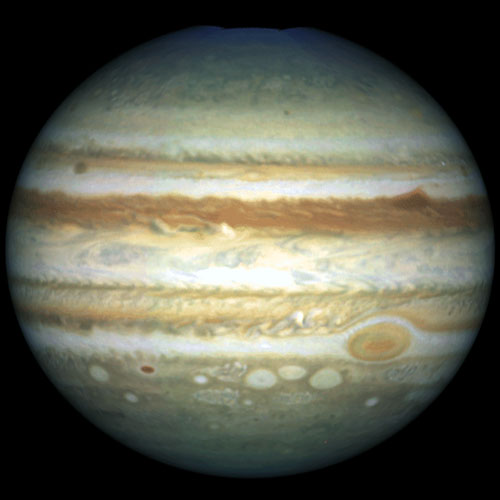ماه پنجمین قمر بزرگ منظومه شمسی است. قطر آن کمی بیش از یک چهارم قطر زمین، فاصلۀ متوسط آن حدود 30 برابر قطر زمین و کشش جاذبه بر سطح آن یک ششم زمین است. بهدلیل مدار بیضوی، اندازۀ زاویهای آن تا 12% تغییر میکند؛ از 5548/0 درجه در هنگام حضیض، نزدیکترین فاصلهاش به زمین، تا ۴۹۲۳/۰ درجه در هنگام اوج، دورترین فاصلهاش از زمین. در مجموع و در زمانهای مختلف، 59% از سطح ماه را میتوانیم مشاهده کنیم. دلیل آنهم قسمتی به مدار بیضوی کشیده ماه برمیگردد، قسمتی به زاویۀ میل مداری آن و بخشی هم به این حقیقت که به هنگام طلوع و غروب ماه، ما آن را از موقعیتهای نسبی متفاوت در فضا میبینیم. این اثر رخگرد (Libration) نامیده میشود.
یک خطای معروف دید در مورد ماه باعث میشود که ماه در نزدیک افق در بزرگترین صورت به نظر برسد. در حالیکه وقتی که در وسط آسمان است، کمترین فاصله را با ما دارد و عملاً اندازۀ زاویهای آن 5/1% بیشتر است! پیوندی بین برداشت ما از اندازه و اینکه جسم را در چه فاصلهای از خود تصور میکنیم، وجود دارد. به نظر میرسد که ما کرۀ سماوی را بالای سر خودمان
میبینیم، اما نه یک نیمکرۀ حقیقی، بلکه بهصورت مسطح. پس باور داریم که جسم در بالای سرمان به ما نزدیکتر است تا افق. حال وقتی که ماه را بالای سرمان میبینیم، مطمئنیم که به ما نزدیکتر است، از اینرو در ذهن خودمان اندازۀ آنرا کوچک میکنیم
[1]!
ماه تنها 8% نور تابشی به خود را منعکس میکند و از این لحاظ یکی از کمترین بازتابشها را در بین اجرام منظومه شمسی دارد. بازتابش ماه تقریباً معادل زغالسنگ است. طرفی از ماه که رو به زمین است طرف نزدیک ماه نام دارد، و سمت دیگر، طرف دور نامیده میشود. حتی با چشم غیر مسلح میتوان دو نوع سطح متمایز را در طرف نزدیک تشخیص داد. نقاط روشنتر، کوهستانهای ماه نام دارد و نقاط تیرهتر به ماریا معروف است ( Maria جمع Mare، در لاتین به معنی دریا). علت این نامگذاری آن است که در ابتدا تصور میشد مناطق تیرهتر اقیانوس و دریا باشد. وقتی که برای اولین بار طرف دور ماه توسط کاوشگر روسی لونا 3 (Luna 3) عکسبرداری شد، یک ویژگی تعجبآور این بود که تقریباً هیچگونه ماریا آنجا وجود نداشت.
کتاب "درآمدی بر نجوم و کیهان شناسی" صفحه ۱۲۱
The Moon is the fifth largest satellite in the Solar System. It has a diameter
slightly more than a quarter that of the Earth and its average distance is about
30 times that of the Earth’s diameter. The gravitational pull on its surface is
about one-sixth that on the Earth. Due to the fact that it has an elliptical orbit, its
angular size varies by about ∼12%; from 0.5548° at perigee, when it is closest to
the Earth, down to 0.4923° at apogee, when it is furthest from the Earth. Partly
due to its eccentric orbit, partly due to the inclination of its orbit and partly due to
the fact that at moonrise and moonset we see it from different relative positions in
space we can observe a total of 59% of the Moon’s surface at one time or another.
This effect is called libration.
The well known Moon illusion makes the Moon appear largest when near the
horizon. However, it will of course be closer to us when highest in the sky and its
angular size will actually be about 1.5% larger! Our perception of size is linked
with how far away we believe an object is from us. It appears that we ‘see’ the
celestial sphere above us, not as a true hemisphere, but one which is fl attened
overhead so that we believe that the objects above us in the sky are nearer to us
than those near the horizon. So, observing the Moon above us, we believe it to be
closer and mentally reduce its perceived size.
The Moon only reflects about 8% of the light incident upon it and is one of the
least refl ective objects in the Solar System refl ecting about the same proportion of
light as a lump of coal. The side of the Moon that faces Earth is called the near side,
and the opposite side the far side. Even with the unaided eye one can clearly see
that there are two distinct types of surface on the near side. We see light regions
called ‘highlands’ and darker areas of the surface that we call ‘maria’, so-called
because they were thought to be seas and oceans and were given beautiful names
such as Oceanus Procellarum, Mare Tanquillatatis and Sinus Iridum – the Ocean
of Storms, the Sea of Tranquillity and the Bay of Rainbows. When the far side of
the Moon was fi rst photographed by the Soviet probe Luna 3 in 1959, a surprising
feature was its almost complete lack of maria.
"Introduction to astronomy and cosmology" page 95
[1]- دلایل متعددی برای این خطای دید بیان شده است. جهت مطالعۀ بیشتر میتوانید موضوع را در منابع تحت عنوان Moon Illusion پیگیری نمائید. (مترجم)




 بنام آفریدگار بی همتا
بنام آفریدگار بی همتا